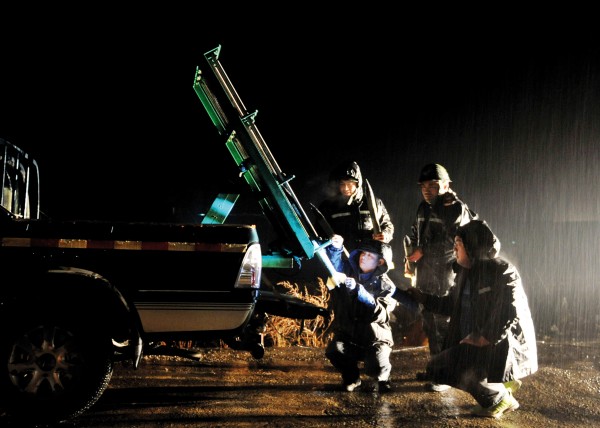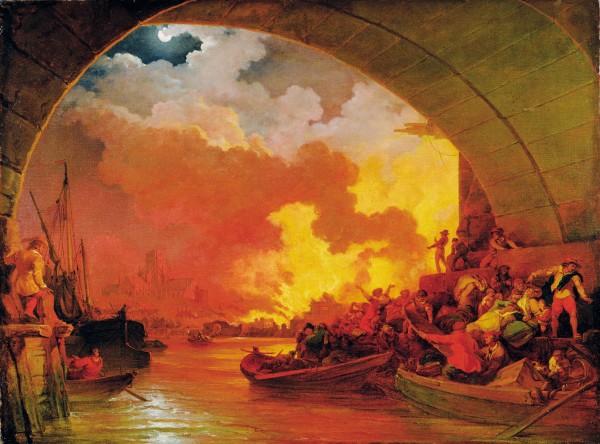Fire weather
Fire racing through scrub caused about fifty residents to flee their homes in the Christchurch suburb of Cashmere on December 14 last year, pausing only to rescue family photos and pets. One schoolboy, David Rees, had to save a goat tethered in the path of the flames It had been bought four years before to keep down the grass and so reduce the risk from the fires that had threatened their home ten times in 15 years. In the event, helicopters with monsoon buckets were able to prevent the flames reaching any of these houses.
However, on the same day, fire destroyed two houses in other parts of Christchurch. The following day a fire raging through a pine plantation was brought under control by seven helicopters, but not before Burwood Hospital was put on evacuation alert.
The fire danger was so high because of the persistent northwest winds that often blow at this time of year. This wind becomes warm and dry as it descends from the Southern Alps to the Canterbury Plains (see Issue 1). The wind dries out vegetation and makes it more susceptible to fire. When a fire starts, the strength of the wind often fans the blaze, while the gusty nature of the nor’wester can make the movement of the fire erratic and unpredictable.
The northwest wind increases the fire risk in all east coast areas from Gisborne to Otago. The wind from the opposite direction, namely the southeast, has a similar effect on the western coasts of New Zealand — again, because the air becomes dry and warm as it descends to the coast after crossing the mountains.
A good example of this occurred when Cyclone Bola passed New Zealand in March 1988. As torrential rain was falling in Gisborne, dry southeast winds reached gale force in the Marlborough Sounds, causing a rubbish fire to burn out of control and destroy a large area of bush.
Strong, dry winds are not the only weather hazard where fires are concerned. If the atmosphere becomes unsfable a fire will often increase rapidly in size and intensity. This can happen in light winds near anticyclones.
The atmosphere becomes unstable when air at the Earth’s surface becomes significantly warmer than the air above it. Surface air is then free to rise to great heights, causing the tall, lumpy towers of cumulus cloud associated with showers and thunderstorms.
A fire can provide enough heat to the air at the Earth’s surface to cause the atmosphere to become unstable. The air then accelerates rapidly upwards, sucking more air into the base of the fire as it does so. This brings more oxygen to the fire, causing it to burn more fiercely, so the air rises more rapidly and so on. This surge in the winds feeding the fires can sometimes cause a whirlwind.
An example of this occurred, with nearly fatal consequences, in January 1974, when the Forest Service was lighting a large burn-off of scrub near Mangakino. Fourteen men were engulfed in a whirlwind as the fire rapidly intensified. They survived by huddling together on the floor of a covered-in truck tray for the 15 minutes the fire roared around them. The heat was so intense that those touching metal parts of the truck were burnt. One landrover was left a lump of molten metal and another was thrown from the road by the whirlwind.
The hot air rising above the fire caused a tall cloud known as pyrocumulus to develop and this soon produced a shower.
Showers produced by pyrocumulus will sometimes put out the fires that caused them. This has happened several times in the Mohaka State Forest when attempts were made to burn off 1000ha of kanuka in fine weather, only to have the fire produce its own shower right overhead.
The likelihood of a fire burning out of control is, of course, increased by the length of the dry spell leading up to it. This makes late summer and autumn a time of high risk. Strong winds off the mountains at this time of year increase the danger even more.
This was the case on the last day of January when there were fires in eastern areas from Canterbury to Gisborne. Buildings were destroyed in a number of places. Sparking power lines, caused by a falling tree, started a fire in a Wairarapa plantation that destroyed 200 hectares of pine trees. A cigarette thrown from a car was the likely cause of the grass fire near Tikokino in Hawkes Bay. People had to be evacuated and hundreds of deer shifted as over 300 hectares of farmland burned.
The wind fanning the fires was particularly strong around Wellington where it gusted over 135kph. Apart from the normal damage as lines of parked motorcycles were toppled, roofs lifted and small planes rolled over, the wind also blew confidential briefing papers on the Gulf Crisis out of Parliament Grounds and down Lambton Quay, and helped reduce New Zealand’s batting to a crumpled heap soon after tea on the first day of the Test match with Sri Lanka.

















